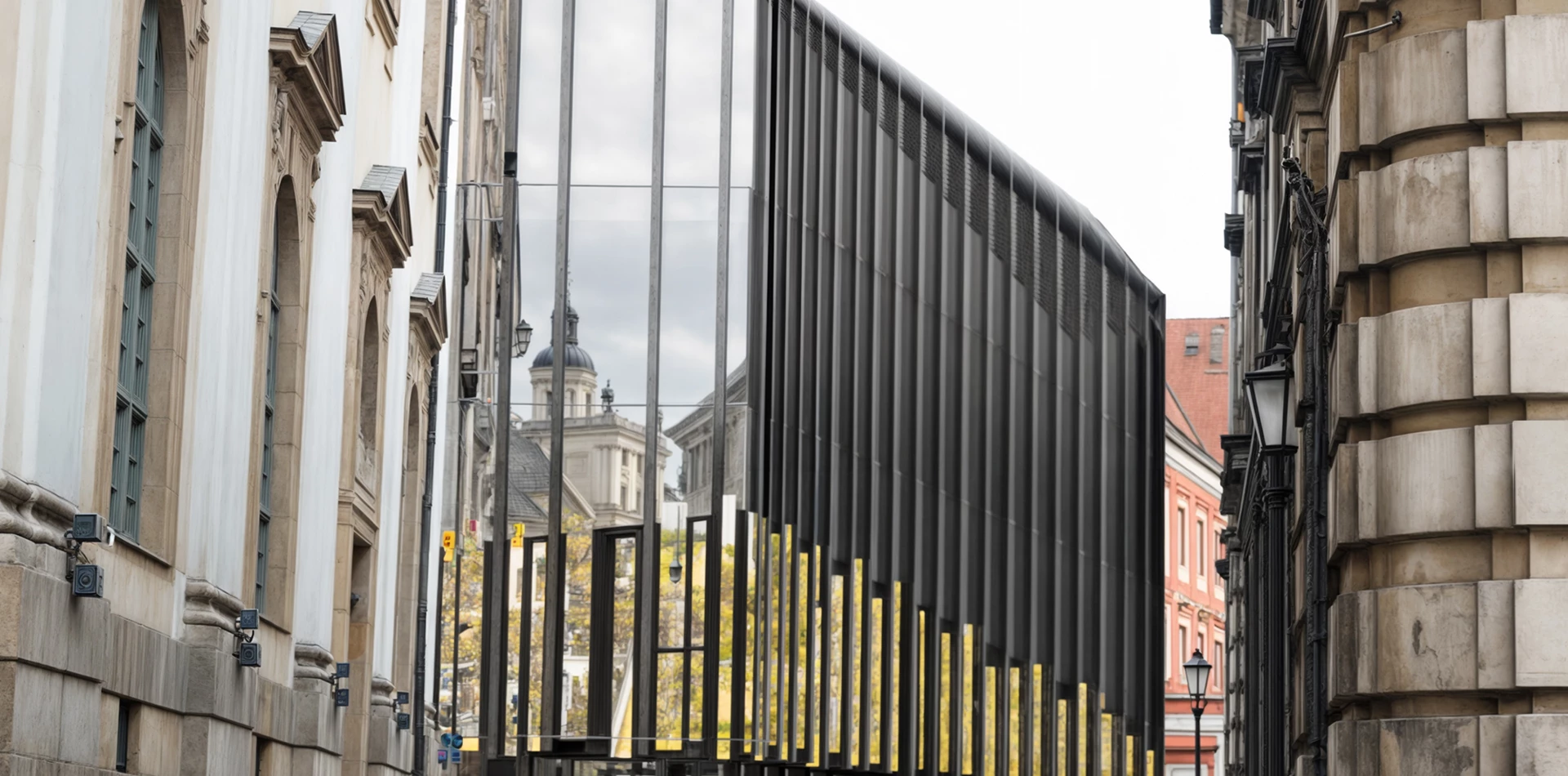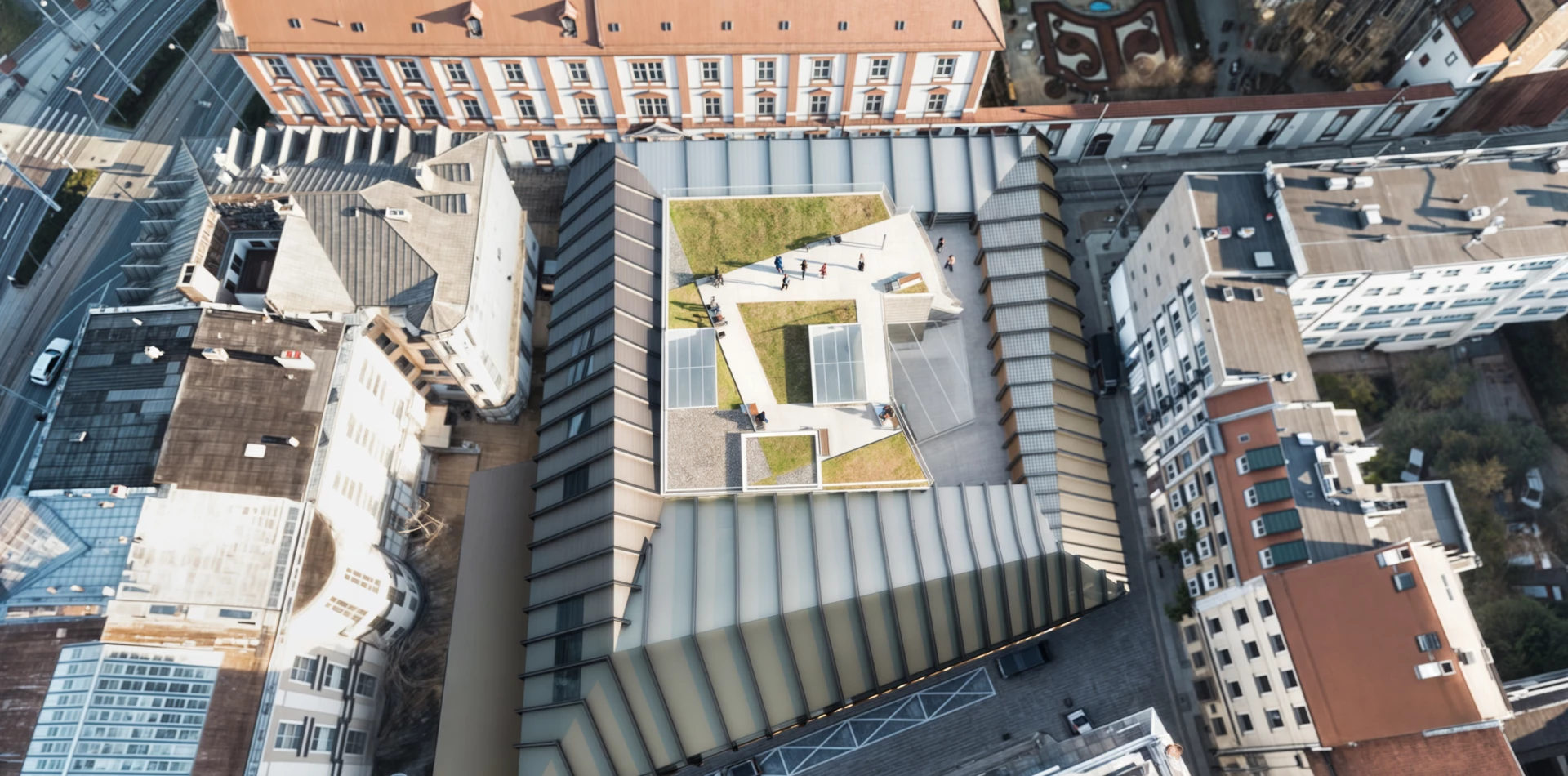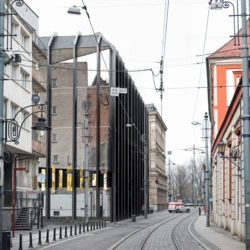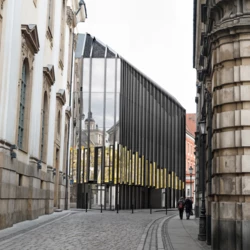The Wrocław Museum was designed as a modern "collection box," whose simple form, made of local materials and glazing, harmoniously combines the historical surroundings with the idea of collecting.
The Heart of Downtown
The museum is located in the heart of Wrocław's historic downtown. When designing the building, the priority was to integrate it into the context of the city's historical fabric without disrupting its harmony. Therefore, a simple, modern structure was chosen. Thanks to carefully placed glazing, it reflects the surrounding architecture, highlighting its qualities and creating a subtle dialogue between the past and the present. Another key assumption was to imbue the building with a modern and innovative character, so that it would become a metaphor for the idea of collecting – a unique, contemporary "collection box." In this way, the museum serves not only as an exhibition space but also becomes a symbolic exhibit representing the architecture of our time.

The functional program of the building has been carefully considered. The ground floor houses a representative entrance area with a spacious lobby, information desk, ticket office, cloakrooms, and restrooms. It is complemented by an educational section with an auditorium and workshop rooms, which foster integration and active participation of visitors in the museum. The first floor is dedicated to exhibition halls, while the upper floors house offices, conservation and collections workshops, storage areas, and access to a green terrace, providing additional open exhibition and recreational space.
The materials used in the design were carefully selected to reflect the character of the city and region. Basalt, sandstone, copper, glass, steel, and concrete—characteristic of Wrocław, Lower Silesia, and contemporary architecture—were used in the structure. Green walls, an additional element, enliven the composition and emphasize the building's connection with nature. Each floor is distinguished by the use of one of these materials, giving the entire structure a unique identity and rhythm.
Thanks to its form, functions, and materials, the museum becomes a meeting place for the past and the present, tradition and modernity, as well as a space open to both art and visitors.





